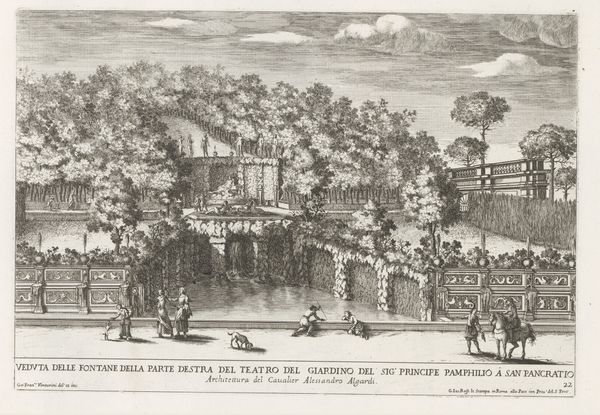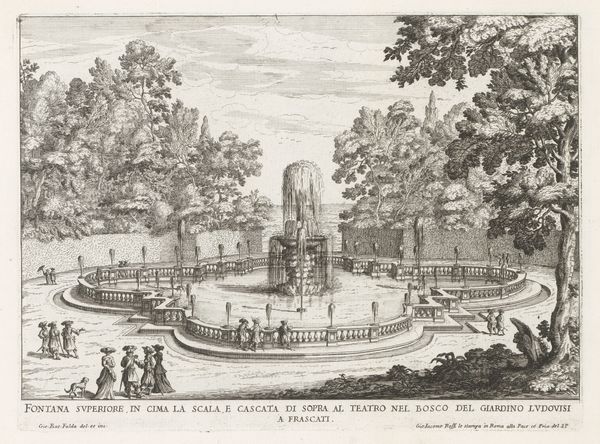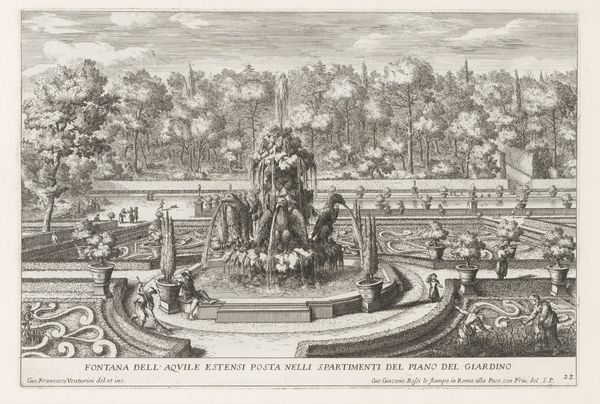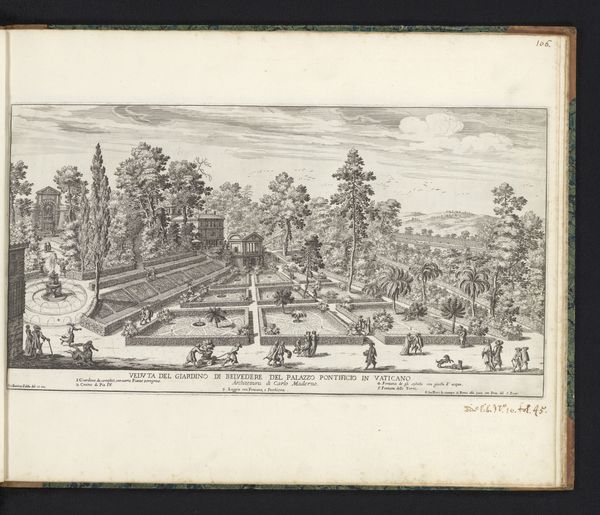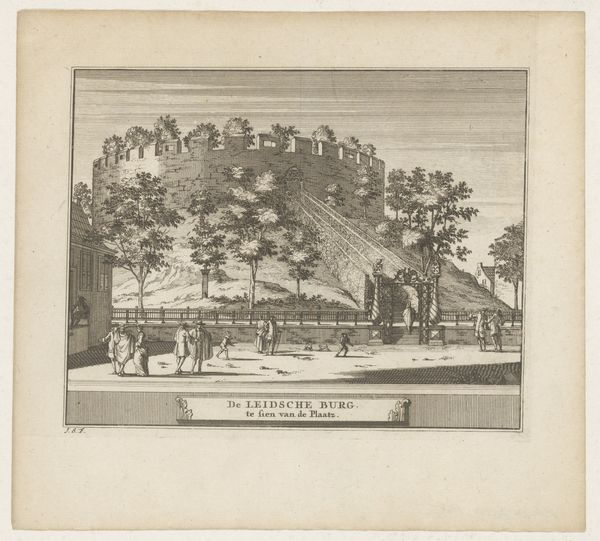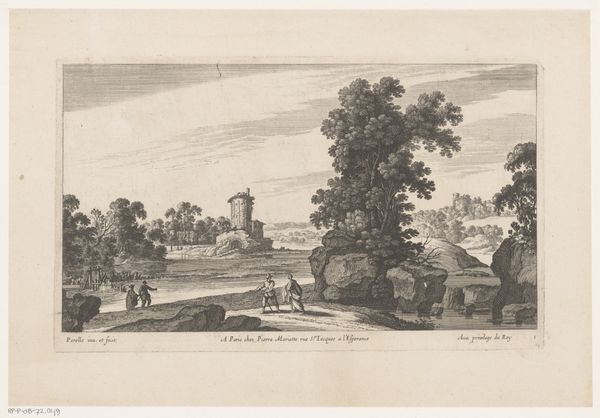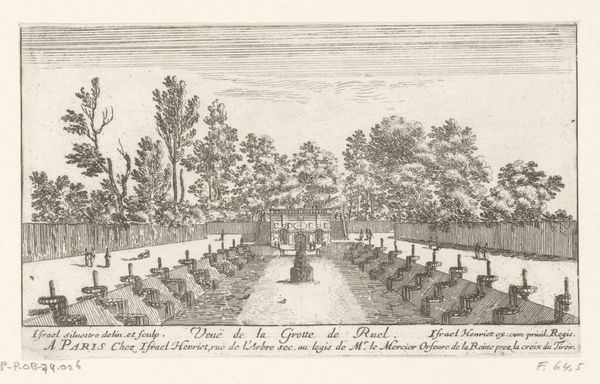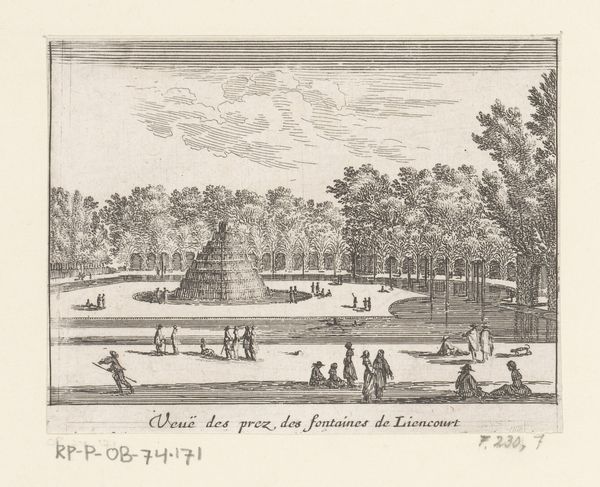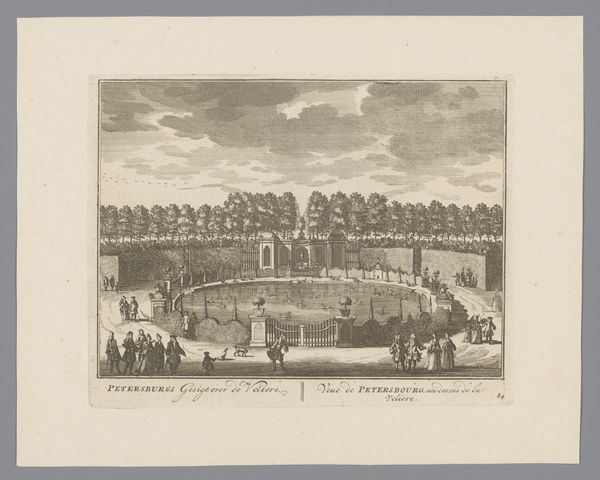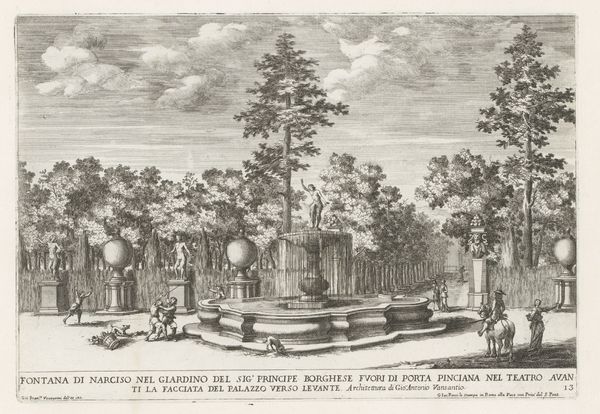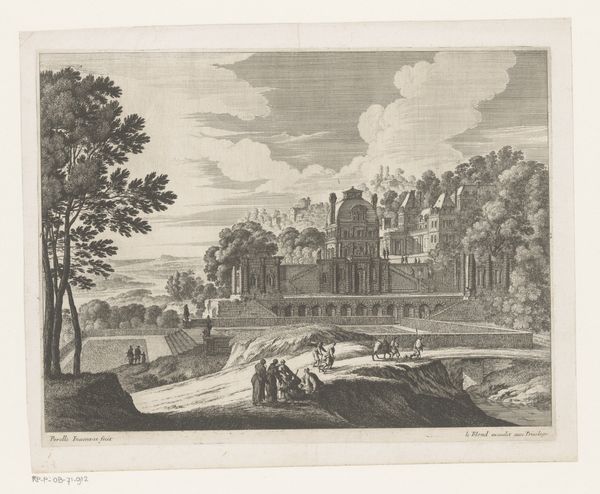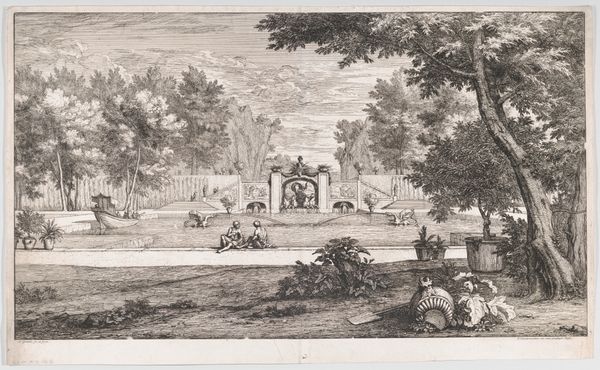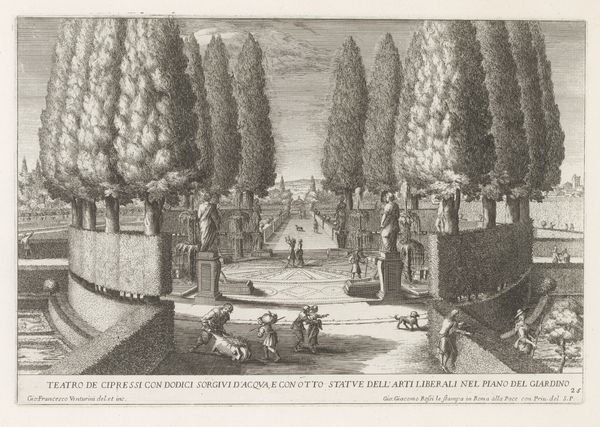
engraving
#
baroque
#
landscape
#
perspective
#
cityscape
#
italian-renaissance
#
engraving
Dimensions: height 211 mm, width 310 mm
Copyright: Rijks Museum: Open Domain
Editor: Here we have Giovanni Francesco Venturini’s engraving, "Fountain in the gardens of Villa Doria Pamphilj in Rome,” made sometime between 1653 and 1691. It feels like a stage set, incredibly formal. I am fascinated by the figures, they look almost posed near the fountain. What stands out to you about this image? Curator: The most striking aspect for me is the interplay of control and exuberance. Notice how the precise geometry of the garden, its neatly aligned trees, contrasts with the unbridled rush of the water fountain. Editor: That's a great point. I was so focused on the scene itself that I missed that tension. The lines of the fountain are contrasted by nature throughout the image. Curator: The fountain as an object carries multiple cultural echoes. Fountains in grand estates often symbolized power, prosperity, control over nature, and the ability to bring forth life-giving water, which has significant historical importance, of course. Water equated to life, cleanliness, a source of industry, a central meeting location, it runs deep in our cultural memories. The theatricality of the fountain’s design – that towering plume of water – almost announces its cultural importance. Editor: It really does become this almost performative gesture. Is that sense of performance common in Baroque art, especially in landscape depictions? Curator: Very much so. Baroque art loved drama and movement. Did you observe how the perspective draws your eye deeper into the image? That visual trick is to inspire a sense of grandeur and endless space, subtly reflecting the patron’s seemingly limitless domain. Think about it in modern applications – advertising, social media… even in design, where a specific arrangement subliminally delivers you a specific emotional reaction, just like the fountains meant to deliver in Venturini’s time. Editor: That makes me rethink the people placed around the fountain – are they less observers and more actors within this display? Curator: Exactly. They are part of the story that the image is communicating. I encourage you to think about what modern images aim to communicate. Editor: This image has given me a new appreciation for the carefully constructed messages embedded within landscapes. It really isn't *just* a picture of a place. Curator: Indeed. Art is rarely just *what* you see, but *how* and *why* you see it.
Comments
No comments
Be the first to comment and join the conversation on the ultimate creative platform.
